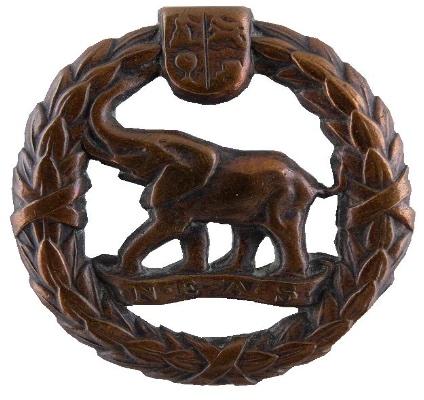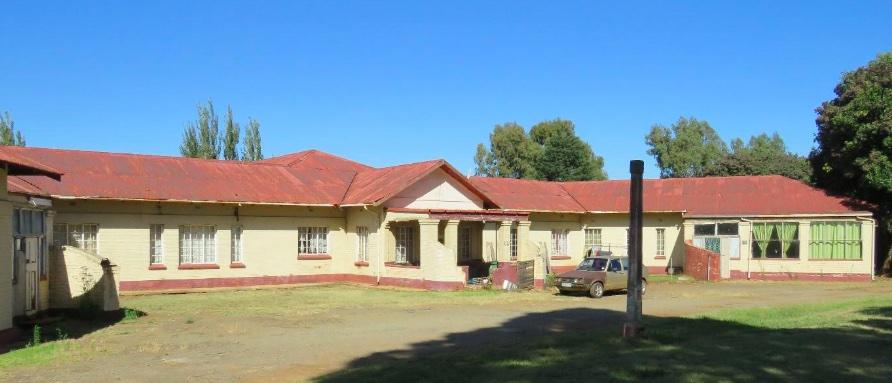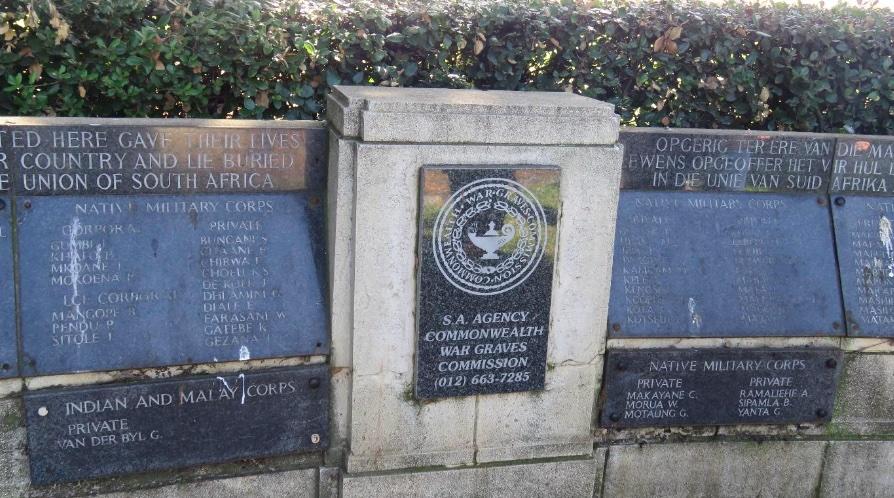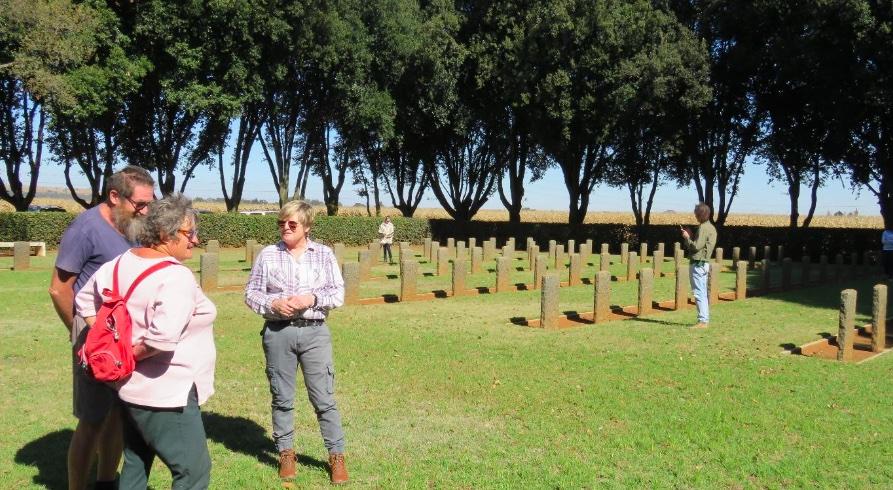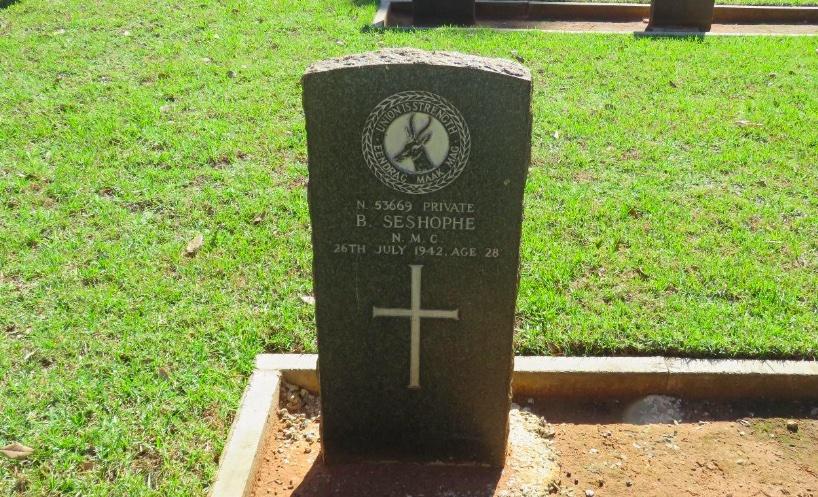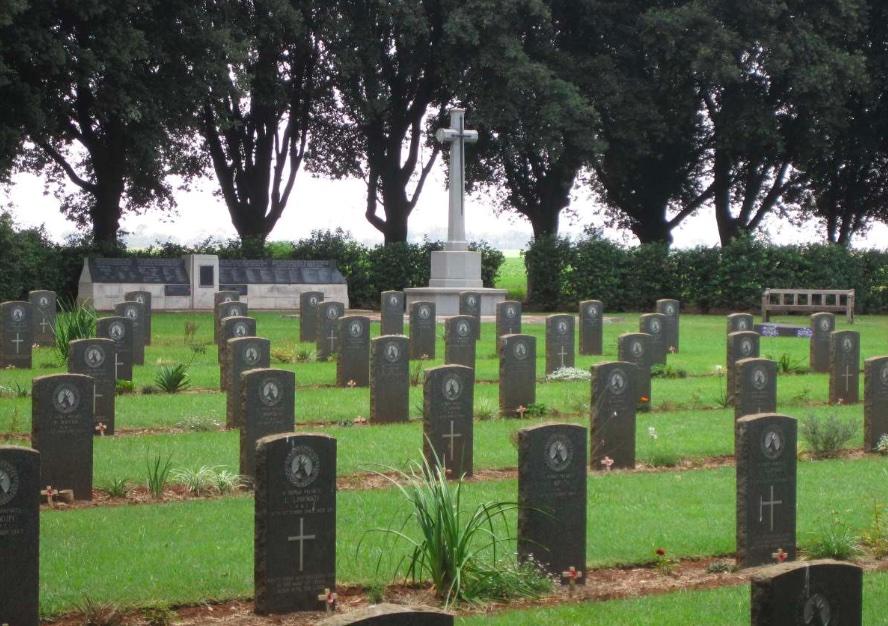
Disclaimer: Any views expressed by individuals and organisations are their own and do not in any way represent the views of The Heritage Portal. If you find any mistakes or historical inaccuracies, please contact the editor.
I recently joined an outing arranged by a Facebook contact, posting heritage messages under the title of 'Springs – History of a Gold Town', to this historical and well-maintained military cemetery, named Palmietkuil, after the gold mine previously operating nearby. This cemetery is the final resting place of 217 members of the South African Native Military Corps (NMC). Incidentally, translated ‘Palmietkuil’ means clump of bulrush pool.
It was interesting to hear most of the mainly White locals who attended, admitting to not having previously visited, or even being aware of this historic military cemetery.
Perhaps it was because of two reasons – Firstly, situated on farmland on the western outskirts of Springs, the cemetery is not easily accessible or visible unless one is familiar with the area. Secondly, because of this country’s controversial history, the contributions of the Cape Corps (CC) and NMC during the World Wars, were either ignored or downplayed.
Until the 1994 publication of The Unknown Force – Black, Indian and Coloured Soldiers Through Two World Wars, by General Ian Gleeson, there was little reporting in the popular South African military publications of the contribution to Allied victory by the approximately 80 000 Black South Africans, who served in a wide variety of mainly non-combatant roles during the Second World War.
The recruitment of Black soldiers upon the outbreak of this war, was deferred because of political dissension and fears articulated by the business sector that this would negatively impact the availability of Black workers for industry and the mines.
Nevertheless, in July 1940, the Adjutant-General of the Union Defence Force (UDF) issued permission for the establishment of four battalions of Black guards to guard vital installations, within South Africa, thereby releasing White soldiers for service abroad.
It soon became apparent that vastly more men of all races were required, following the declaration of war by Italy on 10 June 1940. Suddenly, the war in distant Europe had arrived on South Africa’s doorstep!
The Native Military Corps (NMC) was accordingly established in October 1940, with the responsibility of providing training to Black recruits to the UDF.
Emblem of the Native Military Corps consisted of an African Elephant with the South African Coat of Arms, encapsulated in a wreath.
The African Elephant on the emblem symbolizes the ability of the NMC to perform strenuous physical work.
Alas, for South Africa's gold mining industry, but benefiting the UDF, once the war began, there was a steep decline in the market value of gold mining shares, and it became impossible to source capital. Hence, marginal mines such as Palmietkuil and Welgedacht, both at Springs, as well as Spaarwater and Vlakfontein, both near Nigel, closed down, and their compounds and infrastructure rapidly converted into training depots, through which thousands of NMC recruits would pass during the war years.
Basic instruction training lasted for about six weeks subject to suitability, and some recruits were then selected for further specialised training. Initially the need was for drivers, medical orderlies, stretcher bearers and military guards. But as the war intensified, the need for clerks, carpenters, tailors, boot makers and cooks, etc., increased. By 1941, a school of cookery was established at Milner Park, and the corps school for instructors at Rietfontein. A military hospital was made available at Palmietkuil, that also served as a training centre for medical orderlies and stretcher-bearers.
This hospital lies about 800 meters east of the Palmietkuil cemetery, overlooking Aston Lake. The building has since been partitioned into several residential units, but otherwise has survived the ravages of time reasonably well.
Front entrance of old Palmietkuil Mine Hospital at Aston Lake. Aston Lake is to the rear. (SJ de Klerk)
The compounds of Palmietkuil Mine were situated a few hundred meters west from the cemetery, and only recently demolished by the current farm owner. I had driven past them on a previous occasion, but unfortunately did not realize their historical significance at the time.
The Cross of Sacrifice at the rear of the cemetery serves as a reminder that there are more than forty soldiers interred here. To my knowledge there are only ten such crosses of sacrifice placed at military cemeteries across South Africa. These ten military cemeteries are at Maitland in Cape Town, Dido Valley in Simonstown, Durban’s Stellawood, Hamilton’s in Bloemfontein, Potchefstroom’s Military Cemetery, Pretoria’s Thaba Tshwane (Old No.1) and New Military Cemeteries, Johannesburg’s Brixton and Westpark Cemeteries, and the one here at Palmietkuil.
The Cross of Sacrifice is a Commonwealth war memorial designed in 1918 by Sir Reginald Blomfield for the Imperial War Graves Commission (now the Commonwealth War Graves Commission). It is present in Commonwealth war cemeteries containing 40 or more graves. Its shape is an elongated Latin cross with proportions more typical of the Celtic cross, with the shaft and crossarm octagonal in section. It ranges in height from 18 to 24 feet (5.5 to 7.3 m). A bronze longsword, blade down, is affixed to the front of the cross, and sometimes to the back as well. It is usually mounted on an octagonal base.
A memorial wall behind the Cross of Sacrifice commemorates the ultimate sacrifice by 122 soldiers from the Essential Services Protection Corps, the Malay and Indian Corps, the Cape Corps and the NMC, whose graves in remote parts of South Africa could not be properly maintained. It bears the inscription, in English, Afrikaans, Zulu and Southern Sotho: 'The men commemorated here gave their lives in the service of their country and lie buried elsewhere wihin the Union of South Africa.
Memorial detailing the names of 122 soldiers whose graves in remote parts of SA could not be maintained. (SJ de Klerk)
On my first visit here, about 15 years ago, there was a small cottage, now demolished, adjacent to the cemetery. Our guide Errol explained that it used to be the living quarters of the cemetery caretaker. A small plaque to his memory is affixed to the cemetery entrance.
Errol shared an interesting but rather depressing account of the struggle to maintain the cemetery in a satisfactory condition. In accordance with directives from the Commonwealth War Graves Commission, flowerbeds were established around the graves and flowers planted, only for the irrigation equipment, the water tanks, and the borehole pump to be stolen in quick succession.
It was soon discovered the water from the borehole was contaminated by Acid Mine Drainage (AMD) caused by pyrite (an iron sulfide mineral) exposed by underground mining, reacting with air and water to form sulfuric acid. Municipal water was laid on only for the irrigation pipes to be stolen. The wooden benches were also nicked and subsequently replaced with concrete ones. Still, I suppose all these mishaps at least provided hard learned lessons on maintaining heritage locations in South Africa.
View of the cemetery, bordered by oak trees. (SJ de Klerk)
It was encouraging to hear that occasionally flowers are placed at a few of the tombstones, confirming that some relatives of the deceased are still visiting this peaceful cemetery.
The cemetery is surrounded by a neat hedge and bordered by beautiful oak trees, the seedlings of which apparently originate from Delville Wood.
Post-war, the name Palmietkuil Gold Mine disappeared from public view, the shafts and buildings having been absorbed by the neighbouring Grootvlei Proprietary Mine.
By about 2010, mining operations at the 80-year-old Grootvlei Mine had become very marginal. As the last operating mine on the Far East Rand Basin, it carried the sole and hugely expensive burden of pumping and treating AMD, originating in the flooded tunnels of all the adjoining but defunct mines, and decanting into the shafts and underground workings of Grootvlei Mine. The subsequent sad saga of the collapse, destruction, and asset stripping of Grootvlei Mine by Aurora Empowerment Systems is well known and does not warrant repeating here.
As I departed this cemetery, I could only hope that, unlike the Palmietkuil and Grootvlei Mines, this historically important cemetery would survive for future generations to visit and pay homage.
Grave of B Seshophe (SJ de Klerk)
Directions to Palmietkuil North War Cemetery
From the N12 follow the road signs to Springs. Follow 4th Avenue past the fire station and war memorial and turn left onto the R29 towards Leandra. After 8.4 kilometres turn left at the Aston Lake sign. Travel 1.7 kilometres and turn left onto the track leading to what appears to be a small clump of oak trees (surrounding the cemetery) in the distance.
From the N17 travelling east, take the Wit Road offramp. At the end of the off ramp turn right and about three hundred meters further along turn right into Fryer Road. About a kilometer further turn right onto Ermelo Road that becomes the R29. Proceed along the R29 for a short distance and turn left at the Aston Lake sign.
Similarly, to other isolated heritage sites in South Africa, be aware of your surroundings and if it appears too dangerous, rather abandon your visit. It is far safer to visit this site in a crowd.
Main image: Palmietkuil South War Cemetery. Note the Cross of Sacrifice and the Memorial Wall to the rear. Photo from Website of the Commonwealth War Graves Commission
About the author: SJ De Klerk held many senior positions in HR during a distinguished career in the private sector. Since retiring he has dedicated time and resources to researching, exploring and writing about South African history.
Sources
- Cartwright AP. 1968. Golden Age. Purnell & Sons, Cape Town, Johannesburg.
- Commonwealth War Graves Commission website via https://www.cwgc.org
- Davenport J. 2013. Digging Deep – A History of Mining in South Africa. Jonathan Ball, Jeppestown.
- Gleeson I. 1994. The Unknown Force – Black, Indian and Coloured Soldiers Through Two World Wars. Ashanti Publishing, Rivonia.
- Mackay TJM & Milaras M. Public lies, private looting and the forced closure of Grootvlei Gold Mine, South Africa, in The Journal for Transdisciplinary Research in Southern Africa. Volume 13, No.1 (2017).
Comments will load below. If for any reason none appear click here for some troubleshooting tips. If you would like to post a comment and need instructions click here.

